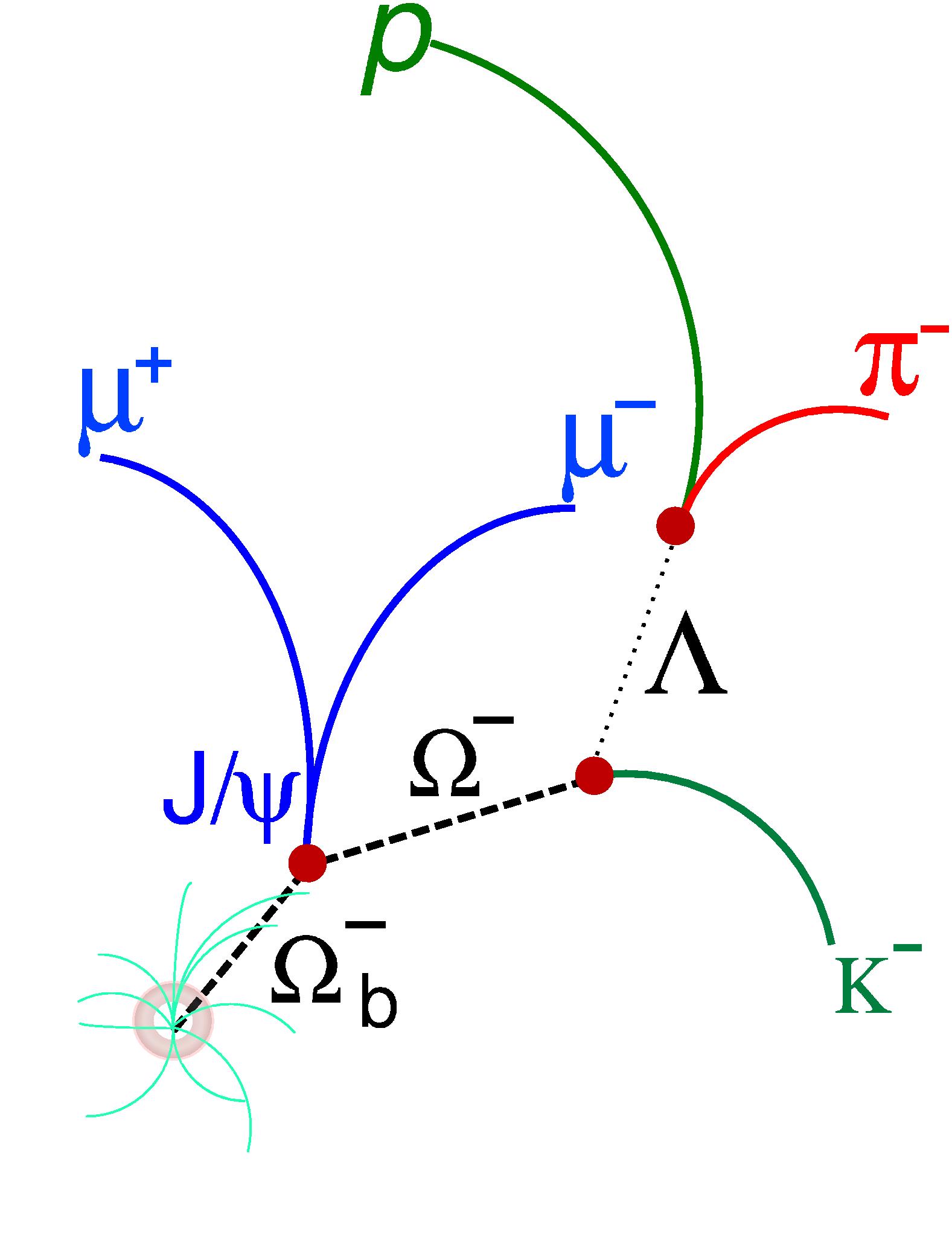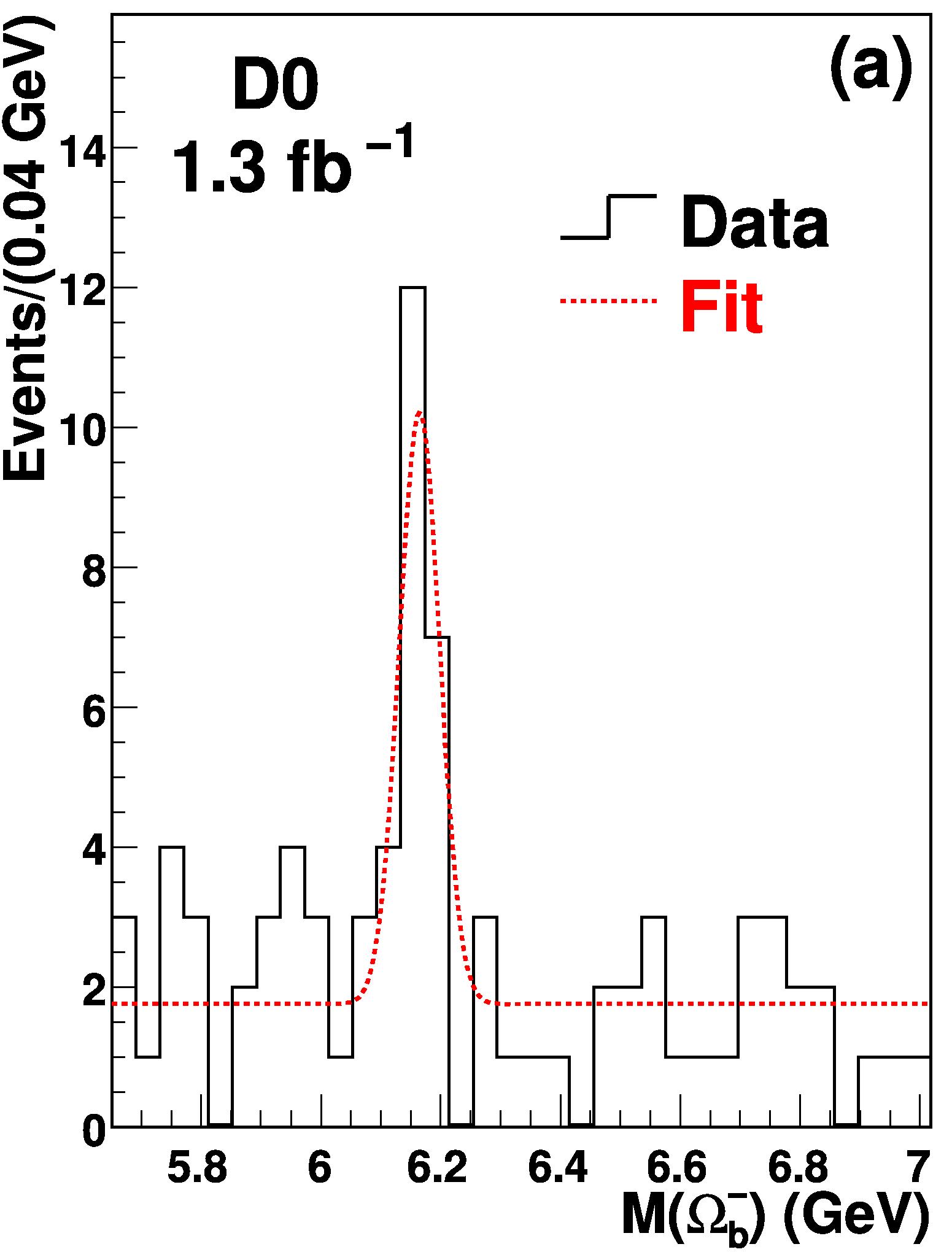Each of these decays generates a reconstructable decay point, so one can reconstruct the whole chain perfectly. A sketch will clarify matters - see below.
 As you can see, the decay involves the creation of additional particles which eventually help the detection of signal events. Crucially, J/ψ mesons decaying into muon pairs allow the collection of events at trigger level, since the trigger is capable of collecting events with muons efficiently.
As you can see, the decay involves the creation of additional particles which eventually help the detection of signal events. Crucially, J/ψ mesons decaying into muon pairs allow the collection of events at trigger level, since the trigger is capable of collecting events with muons efficiently.Unfortunately, the peculiar nature of the Omega_b comes at a price: it is quite rare to produce this particle in hadron collisions. Because of its rarity, a signal of Omega_b decays has been identified only a few years ago by DZERO and CDF at the Tevatron. Both experiments extracted discovery-level mass peaks from their data, but there ensued a diatriba. The mass measured by CDF was different from the mass measured by DZERO by over six standard deviations, if one believed the size of the error bars quoted by the two experiments.
So we have been in a rather embarassing situation for a few years: the Omega_b had to be there, and the signals found by the experiments were both credible; however, at least one of them was wrong in its mass estimate.
At the end of 2011 LHCb showed a first signal of Omega_b decays in their data; however, that was a preliminary result. Today, though, LHCb published a measurement of the Omega_b mass which is way more precise than either of the two Tevatron determinations, and it is based on a quite solid peak of two dozen events. The LHCb measurement confirms one of the two experiments, blaming the other with a strong underestimation of their error bars.
CDF measured a mass of 6054.4 +- 6.8 +- 0.9 MeV (the second uncertainty is the systematic one); DZERO measured instead 6165 +- 10 +- 13 MeV (as above the second is the syst error). What does LHCb find ?
LHCb measures a mass of 6046 +-2.2 +-0.6 MeV. This result is one sigma away from the CDF result, and some seven sigma away from the DZERO result!
 I thus remember a conversation I once had about the mass measurements with a CDF colleague. At Fermilab few really doubted that the correct mass measurement was the one by CDF. Indeed, DZERO did find a signal of Omega_b decays first, but their mass measurement could not be trusted much.
I thus remember a conversation I once had about the mass measurements with a CDF colleague. At Fermilab few really doubted that the correct mass measurement was the one by CDF. Indeed, DZERO did find a signal of Omega_b decays first, but their mass measurement could not be trusted much. So if you now go back to look at the mass histogram published by DZERO when they claimed the discovery of the baryon (see right), you might be tempted to argue that, given that we now know the Omega_b to have a mass in the 6050 MeV ballpark, those events piling up at 6165 MeV with a claimed 10-MeVish uncertainty must be background !
Now, although the significance of the DZERO signal (over five standard deviations) is quite a bit smaller than the significance of the deviation of the mass measurement from what can be now believed to be the true value, enabling one to argue that if taken at face value the situation points to those events not being a real signal, I believe that would be a rather unfair position to take. To me the DZERO one was a genuine signal, but a unknown source of systematics connected to the momentum measurement in the DZERO tracker displaced the whole signal some 115 MeV upwards.
In summary, science today makes a small step forward, as often happens by proving some claim and disproving another. The mass of the Omega_b particle is not a very important parameter per se, but its comparison with different theoretical predictions does help model builders produce more accurate predictions for what we haven't measured yet.




Comments